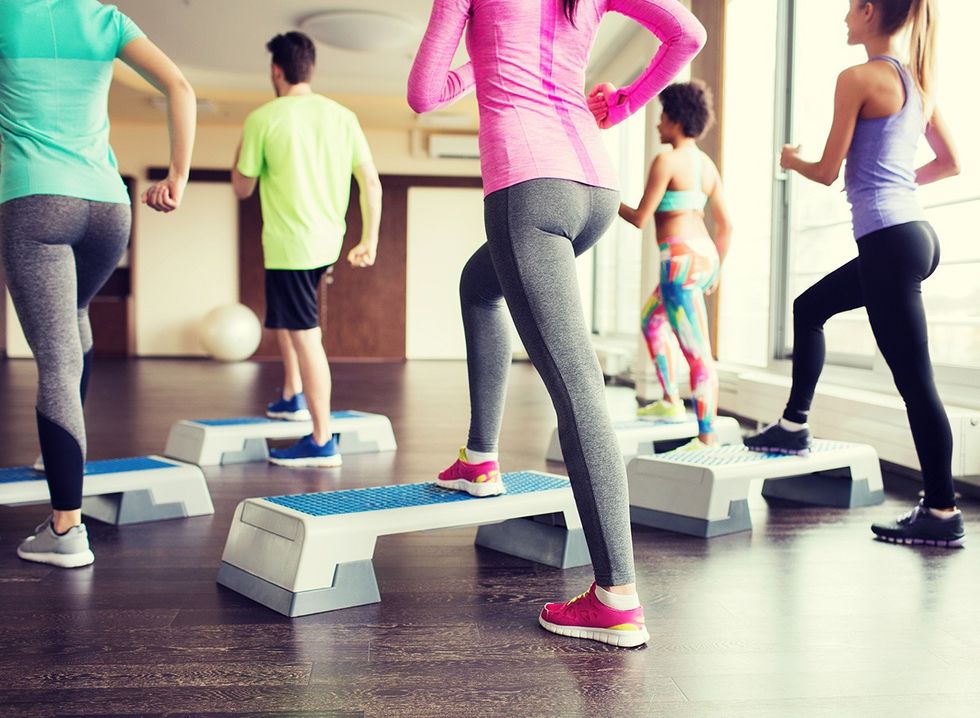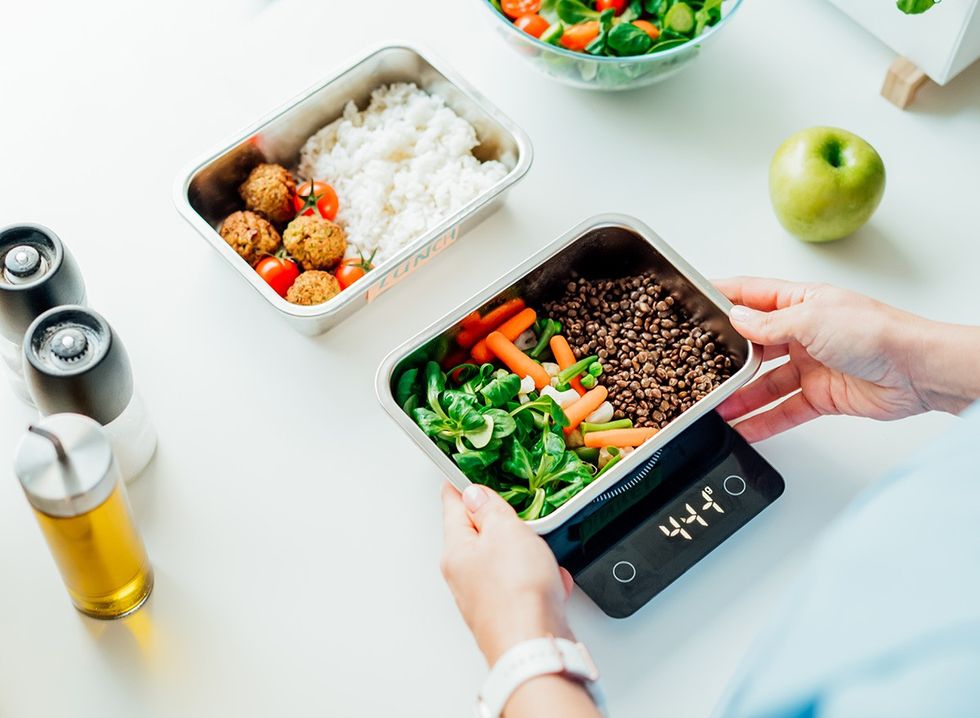Losing 23 pounds is tough but not impossible—provided you stick to some specific rules. TikTok influencer Blake is sharing some very useful fitness advice with his followers on social media. His “60-second blueprint” contains valuable guidance and pointers about what does and doesn’t work when it comes to getting fit and burning fat. His advice is straightforward—from what you should be doing to what you certainly should not. Here are 15 truths you need to know to get fit and lose weight.
Calorie Deficit

If you are not in a calorie deficit, you will not lose weight, Blake insists. Whatever diet you are following, be it keto, carnivore, vegan, or whatever—it only works if you are taking in less than you are burning off. Make sure you count your calories.
High-Protein Diet

Blake recommends one gram of protein for every pound of body weight. Therefore, if a person is 150 pounds, they should be eating 150 pounds of protein every day. This is important for weight loss and strength-building.
Moderately High-Fat Diet
@thenutritionnarc 60 seond blueprint to getting Fit
Blake recommends eating plenty of healthy fats. “For men, I would suggest one-third of your body weight in grams,” he says. “If you weigh 150 pounds, make sure you have at least 50 grams of fat. Women, I would not suggest you go below 60 grams.”
Progressive Overloading

Blake recommends doing the same core effective workouts repeatedly. “You want to progressively overload,” he says. “Maybe one week you add a rep, maybe you add five pounds. Maybe you do an extra set.”
RELATED: 2/2/2 Method to Shed Fat for Summer
Fruits and Vegetables

Blake recommends eating plenty of fruits and vegetables but admits he doesn’t always do that himself. Why? Whenever he buys strawberries and blueberries, they go bad within a few days. The best way to store blueberries is in an open container in the fridge, not an airtight one. Only wash them before eating.
Cruciferous Vegetables

Blake is working on getting more cruciferous vegetables into his diet. “Cruciferous vegetables are easy to find in most places and are some of the most nutrient-rich veggies around,” Amber Sommer, RD, LD, tells the Cleveland Clinic. “A good rule of thumb for greens or any fruits or vegetables is that the deeper the color, the more nutrient-dense it is. For example, spinach contains more vitamins and minerals than iceberg lettuce."
Watch Your Electrolytes

Blake says he was dealing with brain fog until supplementing with electrolytes. “Cutting carbs made me very susceptible to this,” he says. Blake would mix salt and no-salt to get enough electrolytes into his system.
Go For a Walk

Blake does not agree with fitness experts who say walking should not be counted as exercise. He believes any movement is good, and should be encouraged. Research shows walking is a great way to burn fat and positively impact mental health.
RELATED: This Plan Is How to Lose 5 Percent Body Fat In 2 Weeks
Walk On An Incline

Blake recommends walking on an incline. “If you want to burn even more calories, you can max out the treadmill (incline), and it increases the caloric burn by 30-50 percent,” he says. “As a general rule of thumb for someone who weighs 150 pounds, you burn 100 calories per mile.
Don’t Hold On to the Treadmill

Blake advises against holding the bar on the treadmill. “This has been shown to reduce the calories burned for your exercise by like 30 percent,” he says. If you have to, lower the speed and incline until you’re used to not using your hands, he suggests.
Low-Carb Tortillas

There’s no need to cut out all your favorite foods—just make healthier swaps, Blake suggests. For Mexican food, try the low-carb tortillas. They tend to be low in calories and high in fiber, which makes them an ideal weight-loss food.
RELATED: The Ultimate Guide to Getting Fit as a Pear Body Type
Eat More Yogurt

Blake recommends low-fat yogurt as a great substitute for higher-calorie options such as sour cream. The taste is similar, but the yogurt is lower in calories, he says about the food swap. Yogurt also has more protein, and gut-friendly probiotics.
Sugar-Free Jello Cups

Blake loves the sugar-free jello cups for a sweet treat. “These are indistinguishable from the full-sugar counterpart,” he says. “I’m not going to know which is which.”
Weight Loss Hacks

Blake recommends saving your favorite media for your fitness activities. This way you get to enjoy the fitness behaviors more. “Whether that be food prepping or cardio, save your favorite TV show, music, or podcast for that,” he says.
RELATED: 12-3-30 Walking Method: 20 Proven Tips to Lose Weight Faster
Reward Yourself

Blake recommends rewarding yourself when you reach each goal. “Maybe every 10 pounds loss, you give yourself a cheeseburger or some sort of desert,” he suggests as an example. “If there is something to gain from achieving your goals, you are more likely to achieve them.”
💪🔥Body Booster: Focus on protein and fiber for satiety and weight loss.


















 Understanding True Protein ContentShutterstock
Understanding True Protein ContentShutterstock
 What To Do InsteadShutterstock
What To Do InsteadShutterstock Shutterstock
Shutterstock Shutterstock
Shutterstock Shutterstock
Shutterstock Shutterstock
Shutterstock Shutterstock
Shutterstock Shutterstock
Shutterstock Shutterstock
Shutterstock



 nadiamurdock/Instagram
nadiamurdock/Instagram Shutterstock
Shutterstock Shutterstock
Shutterstock Shutterstock
Shutterstock

 I'm a Nutritionist and These 9 High-Protein Snacks Keep My Clients Full While Losing 50 Pounds
I'm a Nutritionist and These 9 High-Protein Snacks Keep My Clients Full While Losing 50 Pounds
 Shutterstock
Shutterstock 2. Processed FoodsShutterstock
2. Processed FoodsShutterstock Shutterstock
Shutterstock Shutterstock/Prostock-studio
Shutterstock/Prostock-studio Shutterstock
Shutterstock Pro TipsShutterstock
Pro TipsShutterstock Shutterstock
Shutterstock Shutterstock
Shutterstock Shutterstock
Shutterstock Shutterstock
Shutterstock Don’t Drink as Much AlcoholShutterstock
Don’t Drink as Much AlcoholShutterstock Most Women on GLP-1s Are Making a Few Common MistakesShutterstock
Most Women on GLP-1s Are Making a Few Common MistakesShutterstock Soda and Sugary DrinksShutterstock
Soda and Sugary DrinksShutterstock Shutterstock
Shutterstock Eat BreakfastShutterstock
Eat BreakfastShutterstock Belly Flab Strip Tip: Sugar and Fat Calories Leave Its Mark on Your BodyShutterstock
Belly Flab Strip Tip: Sugar and Fat Calories Leave Its Mark on Your BodyShutterstock Shutterstock
Shutterstock The Drugs Mimic the GLP-1 Hormone Naturally Produced by the BodyShutterstock
The Drugs Mimic the GLP-1 Hormone Naturally Produced by the BodyShutterstock 3. Deep-Fried ItemsShutterstock
3. Deep-Fried ItemsShutterstock